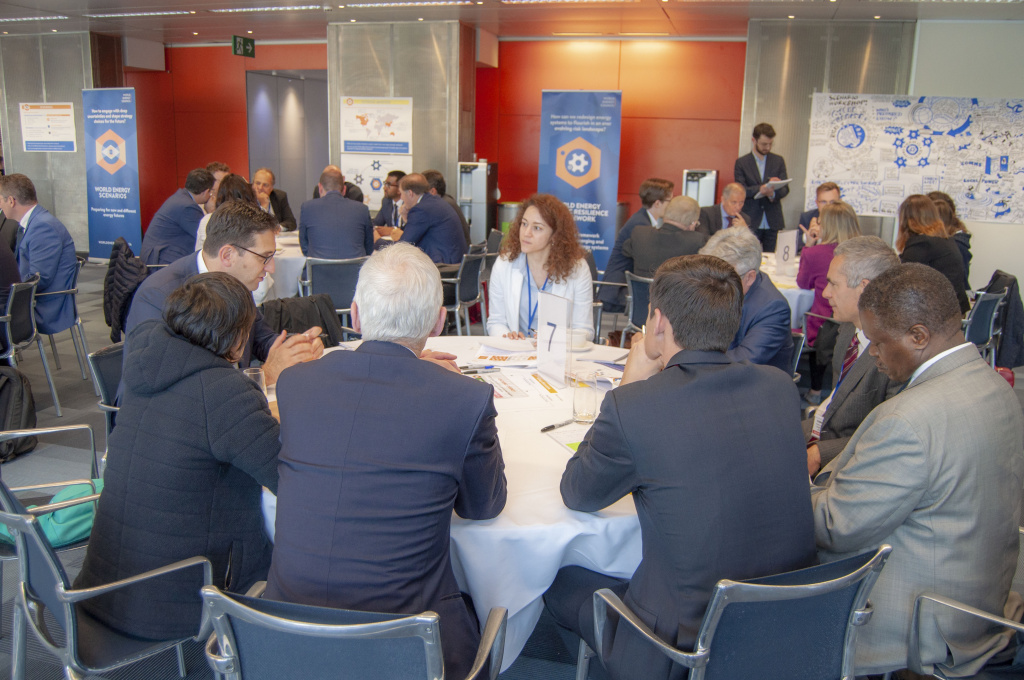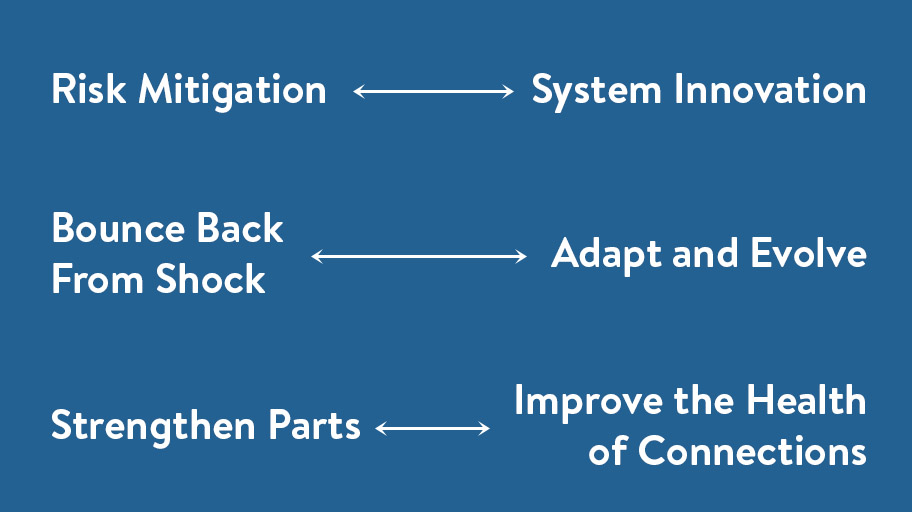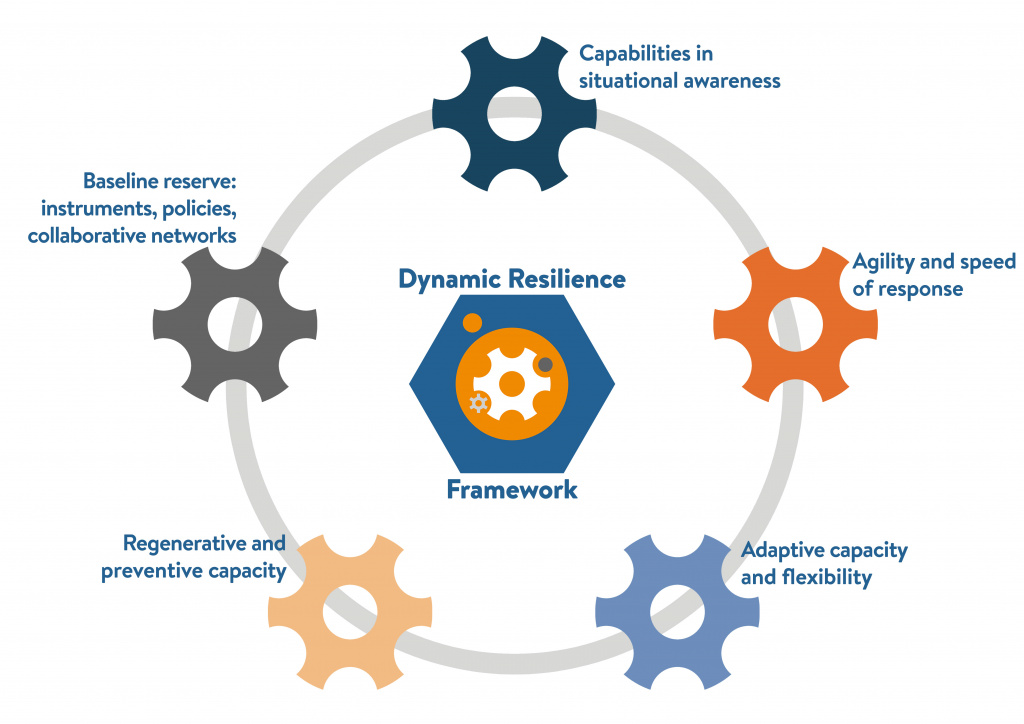A recent gathering of over 70 energy leaders, focussed on the urgent need for, as well as challenges and opportunities of, enabling dynamic resilience as part of successful global energy transition (The World Energy Council convened over 70 energy leaders on the 15th May 2019 at the offices of Marsh & McLennan Companies in Tower Hill, London, see photos of the event here). The conversations highlighted that dynamic resilience involves more than better risk management of individual assets - and building agile and adaptable capabilities, benefits from rehearsing actions together using new and different energy futures.
The meeting revealed considerable interest but a lack of shared understanding about what energy system resilience means in practice, who is responsible and how it can be enhanced.
Energy systems transformation is underway - a new era of clean energy abundance is emerging to enable a next era of inclusive growth and sustainable prosperity. But it’s a bumpy ride.
The renewables revolution means we are relying more than ever before on weather for energy. Digitisation is impacting across the energy value chain, enabling smarter energy systems and large efficiency gains. In combination, these new developments offer opportunities for new types of energy system (e.g. decentralised and decarbonised power systems), which can support new energy services e.g. electrified mobility, new users e.g., sharing economy, and new types of economic development e.g. circular economy.
But these developments also bring new challenges and the wider context of energy transition is also changing. Energy systems - a more complex and integrated whole – need to have built in agility and flexibility to adapt their performance to achieve different goals (e.g. new livelihoods, smog free cities, mobility services) under new and different future conditions.

Geopolitical instability was the top shared concern amongst those attending the event. Discussions reflected on the strains on global cooperation and the emerging geopolitics of data and rare earths, in addition to the geopolitics of oil, gas and climate change.
The increasing frequency severity of impacts of extreme weather events and natural hazards were considered to present the second greatest test of the resilience of energy systems, followed by the impacts of climate change. Cyber security – although important to some, was of less importance to many.
The biggest opportunity, according to attendees, is in sharing best practice and developing industry standards for resilience. Better forecasting and data tools were also seen as important.
Also seen as important is the need for diversification of assets and the need for better understanding of innovative insurance mechanisms for managing impacts of climate change.

The definition of ‘energy system resilience’ varies country-to-country, with varying levels of risk appetite and impact tolerance. For example, the implications and impact of frequent or prolonged blackouts (for whatever reason) are strikingly different in Venezuela and the UK.
What is common, however, is appreciation that energy system resilience is a dynamic capability at the level of the system which requires both:

The rise in distributed and localised power is an enabler and a barrier to whole system resilience. Distributed generation can increase availability and redundancy, but also put pressure on centralised grid networks to back-up intermittent supply.
Geo-political and regulatory risks and increasing complexity due to digitalisation and changing social behaviours were discussed stressing the importance of regulation to instigate and implement best practice and ensure fair market access to a diverse set of energy sources – both for investors and customers.
New insights on energy system resilience can be developed by using the Council’s Insights Toolkit, which includes five tools and introduces a new Dynamic Resilience Framework.
Each tool can be used to develop new insights about resilience e.g. the World Issues Monitor can be used to explore connected challenges and the Energy Policy Trilemma Index can be used to exchange policy learning. Used in combination, the tools can deliver even deeper insights e.g. combining World Energy Scenarios with Energy Trilemma Index to inform new policy pathways.
The event concluded with a panel discussion, moderated by Angela Wilkinson, Senior Director of Scenarios and Business Insights at the Council. Participants included Andrew George (Chairman of Energy and Power, Marsh), Juerg Trueb (Managing Director, Swiss RE) and Ian Gardner (Global Energy Leader, ARUP). The workshop reflected on questions about willingness to pay for resilience and who is responsible for resilience in energy systems transition. The panel welcomed the Council’s pragmatic Framework and its efforts to promote best practice learning using extreme weather cases and cyber security crisis simulation.
Discussions touched on the need for the private sector to share learnings, rather than build walls and protect IP and touched on the dichotomy of islanded or distributed energy systems and their relative resilience. Suggestions for further improvement of the Dynamic Resilience Framework are to include systems integration and interdependency.
The panel concluded that dynamic resilience is tangible and obtainable, and hoped stakeholders could see it as a high-level priority for action.
The Council and its community are in a unique position to convene across geographies and sectors, mobilising whole systems thinkers, leveraging the energy of future energy leaders, and learning from the experience of incumbents.
Learn more about the Council’s Energy Transition Toolkit.
Learn more about the Council’s Dynamic Resilience Framework.







